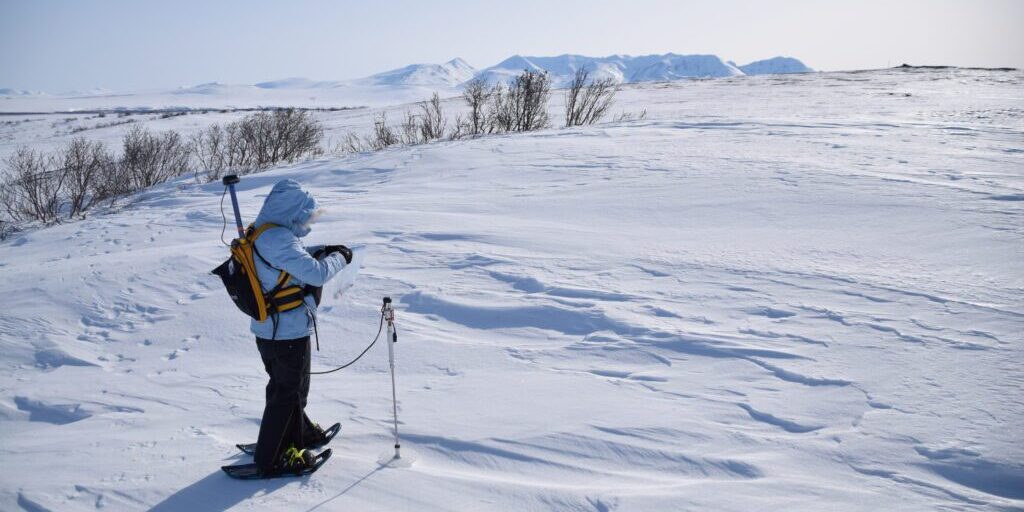Researchers from a nationwide consortium have been conducting fieldwork in Alaska for over a decade. The Next-Generation Ecosystem Experiments in the Arctic (NGEE Arctic) project is a 12-year initiative that aims to model and predict the impact of Arctic warming on Alaska and the world.
The project includes contributions from Oak Ridge National Laboratory, Los Alamos National Laboratory, Lawrence Berkeley National Laboratory, and the University of Alaska Fairbanks.
One of the team's central goals is to understand the role of carbon stored in permafrost and how it is released as the Arctic warms.
According to the project’s Director, Colleen Iversen, permafrost soils contain significant amounts of carbon in organic material that has been frozen for thousands of years. As the climate warms, Iversen says this newly-thawed material is causing problems.
“When it thaws, bacteria and fungi wake up from their slumber and start munching on that thawed soil,” Iversen said. “They can release carbon dioxide if it's dry or methane if it's wet and flooded, which is a problem because methane can mean 30 times more warming than carbon dioxide.”
To better understand this dynamic, the NGEE Arctic team set out to create a comprehensive virtual model, affectionately referred to as “Virtual Earth”. But environmental scientists aren’t often expert computer programmers and computer programmers aren’t often expert environmental scientists. So, the team mashed the two worlds together to make Virtual Earth possible.
“We brought modelers to the field with us so that they could sort of observe the real world that they were trying to model or represent in virtual space,” Iversen explained.
Over the course of 12 years, the team built and maintained data collection sites near Utqiaġvik and Nome. Amongst their datasets are soil temperatures, thaw depth, moisture, and CO2 levels from around 200 locations. Iversen said that the intent of the project goes beyond data collection, it’s giving researchers the opportunity to test ideas against the Virtual Earth model and learn from the results.
“We're not trying to build a better tool. We're trying to build a better hypothesis of the way that we think the world works,” Iversen said.
This approach will enable researchers to more accurately predict the effects of warming on Arctic ecosystems without solely relying on real-world experiments, which are limited by time and resources.
With this new data in-hand, the NGEE Arctic team plans to test their findings against publicly available data from Canada, Sweden, and Norway. Iversen said that process will take up to three years.

Collaboration and Outreach
Iversen stressed the importance of partnerships with Alaska Native communities. In Nome, the project collaborated with Sitnasuak Native Corporation, Council Native Corporation, and Mary’s Igloo Native Corporation.
“Where we do our science in Alaska is on native lands, and so we're very grateful to have been permitted to work on those lands,” Iversen said.
According to Iversen, all information gathered by the project is made available for other researchers and the public through their website. But oftentimes that data is hard to make sense of if you’re not immersed in the field, so the team has added public outreach to bridge the information gap.
“On our website we actually have almost 300 different data sets that folks can go and look at, right? But that's not as helpful if you're not sort of knowledgeable about the different kinds of data,” Iversen said. “So we like to do a lot of things like this, talking to folks like you, but also talking to kindergartners about what we found."
To get this tremendous amount of work done, the NGEE Arctic team employed researchers across numerous scientific disciplines. Iversen said they developed a research ethos focused on safety and mutual respect.
“When you have 150 folks across four institutions working together, what I like to tell folks is that the project is built on a foundation of safety, but that's not just physical safety,” Iversen explained. “I've asked each team member to check two boxes for me, they have to be a good collaborator and a good scientist. Both.”




